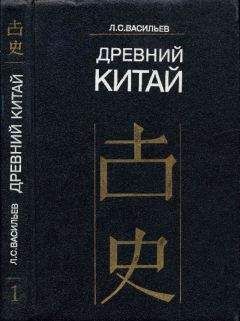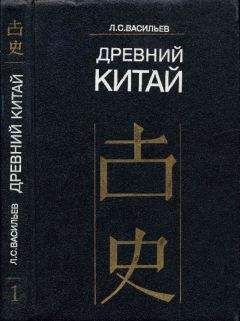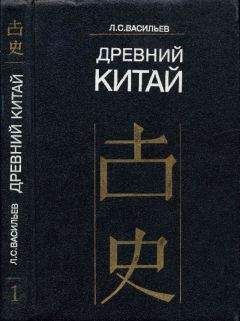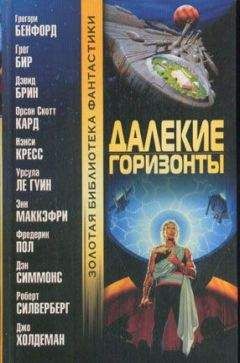Karlgren, 1945 — Karlgren В. Some Weapons and Tools of the Yin Dynasty. — Bulletin of the Museum of Far Eastern Antiquities. 1945, № 17.
Keightley, 1985 — Keightley D.N. Sources of Shang History. Berkeley, 1985.
Lacouperie, 1894 — Lacouperie T. de. Western Origin of the Early Chinese Civilization from 2300 B.C. to 200 A.D. L., 1894.
Legge, 1985— Legge J. The Chinese Classics. Vol. I–V. Hongkong-London, 1861–1872; Taipei, 1985 (repr.).
Lewis, 1990 — Lewis M.E. Sanctioned Violence in Early China. N.Y, 1990.
Liao — The Complete Works of Han Fei Tzu. Translated from Chinese by W.K. Liao. L., vol. 1, 1939, vol. 2,1959.
Li Chi, 1885 — Li Chi. Sacred Books of China. The Texts of Confucianism. Transl. by J. Legge. Vol. 1–2. Oxf, 1885.
Lin, 1942 — Lin Mousheng. Men and Ideas. An Informal History of Chinese Political Thought. N.Y, 1942.
Linduff, 1995 — Linduff K.M. Zhukaigou. Steppe Culture and the Rise of Cinese Civilization. — Antiquity, № 69, 1995.
Liu, 1985— Liu Jing-shan. An Exploration of the Mode of Thinking of Ancient China. — Philosophy East and West. 1985, vol. 35, № 4.
Mair, 1980— Mair V.H. Old Sinitic Myag, Old Persian Mague, and English "Magician". — Early China. № 15, 1980.
Mair, 1995 — Mair V. Mummies of the Tarim Basin. — Archaeology. 1995, April-May.
Mei, 1929 — Mei Yi-pao. The Ethical and Political Works of Mo-tse. L, 1929.
Needham, 1956— Needham J. Science and Civilization in China. Vol.2. Cambridge, 1956.
Pokora, 1959 — Pokora T. The Canon of Laws by Li K'uei. — A Double Falsification? — Archiv Orientalni. 1959, № 27.
Pulleyblank, 1966 — PulleyblankE.G. Chinese and Indo-Europeans. — Journal of the Royal Asiatic Society. 1966, № 1–2.
Rickett, 1965 —Rickett W.A. Kuan-tzu. Hongkong, 1965.
Saussure, 1923— SaussureL.de. Le systeme cosmologique sino-iranien. — Journal Asiatique. 12 ser. T. 202, 1923.
Schafer, 1951 — Schafer E.H. Ritual Exposure in Ancient China. — Harvard Journal of Asiatic Studies. Vol. 14, 1951.
Schlegel, 1872 — Schlegel G. Sinico-Aryaca, ou Recherches sur les racines primitives clause les langues chinoises et aryennes. Batavia, 1872.
Schmidt, 1934— Schmidt P. Persian Dualism in the Far East. — Orient Studies in Honor of Dastuiji Saheb Cursetji Erachji Pavry. Oxf, 1934.
Schwartz, 1985 — Schwartz B. The World of Thought in Ancient China. Cambr, Mass, 1985.
Thompson, 1979 — The Shen Tzu Fragments. By P.M. Thompson. Oxf, 1979.
Trombetti, 1922 — TrombettiA. Elementi di glottologia. Bologna, 1922.
Ulenbrook, 1967— UlenbrookJ. Einige Ubereinstimmungen zwischen dem Chinesi-schen und dem Indogermanischen. — Anthropos. 1967. Vol. 62, № 3–4.
Ulenbrook, 1968— UlenbrookJ. Zum Chinesischen Wort hue fur "Blut". — Anthropos. Vol. 63–64. 1968-69, № 1–2.
Ulenbrook, 1970— UlenbrookJ. Zum Chinesischen Wort ti. — Anthropos. Vol.65. 1970, № 3–4.
Ulving — Ulving T. Indo-European Elements in Chinese? — Anthropos. Vol. 63–64. 1968–1969, № 5–6.
Van der Loon, 1952 — Van der Loon P. On the Transmission of Kuan-tzu. — T'oung pao. Vol. XLI, pt. 4–5, 1952.
Vandermeersch, 1965 — Vandermeersch L. La formation du legisme. P, 1965.
Vandermeersch, 1994 — Vandermeersch L. Etudes sinologiques. P, 1994.
Vasiliev, 1997 — Vasiliev LS. The Orient in XX Century and its Destiny in Future. — Oriental Studies in the 20th Century: Achievements and Prospects. Vol. II. Moscow, 1997.
Waley, 1934 — Waley A. The Way and Its Power. L., 1934. Waley, 1938 — Waley A. The Analects of Confutius. L., 1938. Watts, 1975 — Watts A. Tao: The Watercourse Way. N.Y., 1975. Watson, 1963 — Watson B. Mo Tzu. Basic Writings. Transl. by B. Walson. N.Y., 1963. White, 1920 — White К V. Chinese and Sumerian. — The New China Review. Vol. II. 1920, № 1.
Wilhelm, 1924 — Wilhelm R. I Cing. Das Buch der Wandlungen. Bd. 1–2. Jena, 1924. Yang, 1912 — Yang Chu's Garden of Pleasure. Transl. by A. Forhe. L., 1912. Zurcher, 1959 — Zurcher E. The Buddhist Conquest of China. Leiden, 1959.
Abstract and some general conclusions
The opening chapters of the last volume are dedicated to the history of the warring states of the Chankuo period ("The Warring States", the 5th-3rd centuries B.C.). We provide a brief description of events in each of them, including the domain of the Son of Heaven (t'ien-tzu), i.e., the wang of Chou. A detailed account is given of wars and politico-diplomatic actions which accompanied that protracted and vehement strife between kingdoms and coalitions formed by them. The profound transformation of internal structure that changed the entire aspect of the Chou China is also discussed. Special attention is given to the process of defeudalization that had already begun in the late phases of Ch'unch'iu period.
The end of Ch'unch'iu period was marked by a number of important innovations. China saw the beginning of Iron Age. Cheaply produced iron tools were used for converting virgin lands into plowed fields. This contributed to the growth of farming population and its well-being. This was also the time of the rapid progress of cities with their crafts, trades, commerce and monetary relations. Coins of different kinds found by archaeologists and dated to the late Ch'unch'iu provide proof of that. Private property, well-developed market relations, affluent commoners — something previously unheard-of — appeared in cities. Agrarian countryside also started to be involved into market relations. Farmers were selling their extra production. All those changes and innovations in economy were accompanied by major shifts in the sphere of social relations.
Top-level aristocratic elite began losing its exceptional role, though it still retained its position in the upper echelons of social hierarchy. A new social stratum, shih, emerged — later, it would become extremely important for further development of Chinese society. It might be thought of as the Chinese "middle class", which originally incorporated members of nobility, primarily the tafu warriors. Not many of warriors' sons belonging to this class could inherit father's war chariot with a team of four horses. None of the states possessed a sufficient number of chariots. As is known, it was by this criterion that the main distinction between them was drawn: small kingdoms had 100 to 200 chariots, medium kingdoms had 400 to 800 chariots, and the larger ones, up to several thousand. In a word, during the late Ch'unch'iu, the shih — that lowest stratum of the ruling classes — became the most numerous one. The influx that swelled the ranks of the shih was coming both "from above" (sons of the tafu and of higher ranking aristocrats) and "from below" (warriors with a distinguished career). Besides, literate men and experts in ritual were also admitted into the ranks of the shih, since the behest to promote the intelligent and the capable was strictly followed in China.
For the most part, the volume is an account of the activity of Confucius (who was already partly discussed in Volume II) and other outstanding thinkers and reformers of the Chankuo period. This volume's main emphasis lies on the Master's activity as a reformer: he aimed at changing the fundamental principles of Chinese life by gradually creating a new basis of strict socio-ethical norms. Confucius fervently wished to leave behind all those evils which were so typical of the feuds waged by the ruling elite. To the reality of the past he opposed the ancient norm that he idealized and that had existed — more in words than in deeds — parallel to the world of intrigues and murders. He strove to restore the best traditions and to teach all the people to observe the ceremonies and norms of life that he unhallowed and transformed into a universally mandatory ethical standard.
Having adapted the masterfully reinterpreted tradition to serve his ends, Confucius turned out to be a great reformer. He put forward the idea of Tao as the great way of the truth and endless perfection, and he sang the "man of noble birth" (chun-tzu) as a paragon of following Tao. The primary meaning of the Master's ideas — which were revolutionary in their inmost essence — was the elimination of the social border dividing people of different descent; he wanted that border to be placed differently, viz. between the people and the rulers. The latter should be the most intelligent and capable men, like Confucius' disciples and their equals, not some opportunists who seized power by chance. As for the system of government, it must rest on those principles that he fostered: to care for the people, to understand their needs, to be able to win their trust and to lead them, and — perhaps, the most important of all — to seek no personal gain. Of course, all people loathe poverty and yearn for prosperity. However, a wise ruler must modify their wishes, moderate their ardor, and endeavor to achieve such a state of affairs when people would become accustomed to be content with what they have already, while constantly trying, by all legal means, to increase their wealth.
An admirer of things ancient, the Master was also a radical innovator. Though, to tell the truth, his compatriots failed to appreciate, let alone comprehend, this at one go. Rulers of the states who struggled for power and mostly used military strength had fully justified fears that, if they made people's welfare their priority, it would seriously handicap them. In the Chankuo period, wars occurred as often as before. However, their nature radically changed. The feudal battles of the chariot-mounted tafu "chivalry", with armor-clad infantry as auxiliary troops, were now a thing of the past. They were replaced by battles in which participated several dozen to several hundred thousand armor-clad infantrymen — armies that rulers found very expensive to sustain. This lead to imposing heavier taxes. Confucians, of all groups, opposed the increasing taxation of the people most ardently, be it the humble but steadfastly uncompromising Confucius or the unceremonious Meng-tzu (one of the most brilliant followers of the Master's cause) who shouted at rulers granting him audience.
One more important circumstance must be noted. During the Ch'unch'iu period, leaders of the pa rank (they were topmost among the chuhou rulers) used to prevent the stronger states from crushing the weaker ones, which was no longer the case. Having broken the fetters of feudal norms, rulers of the Chankuo period became ftill-fledged sovereigns of centralized states. Since their expansionist drive was now totally unchecked, they started pressing and crushing their neighbors, intending to weaken their armed forces and to annex desirable pieces of land. Free from feudal conflicts and internal strife, they were sometimes prepared to go to the stake for achieving their single aim: to defeat their equals in that struggle.
Instead of the tafu warriors and the ch'ing officials of the past, rulers of the Chankuo kingdoms had big armies and capable generals at their disposal. The latter were promoted for their personal merits and sometimes came from the ranks of the worthiest shih. Rulers consolidated their administrative apparatus by manning it with intelligent and capable shih. Unlike the feudal apparatus, it included those who — on account of having necessary qualifications — were capable of managing state affairs and who could be hired and dismissed like ordinary office workers. These officials of new kind were heading up new, gradually forming administrative-territorial structures that consisted of administrative units, not of feudal landed domains as earlier. Aristocrats continued to exist only as retainers and advisers of rulers and normally had to compete with clever administrators of the shih class, who sometimes hailed from different kingdoms. Who were the shih selected by rulers for this job? How, generally speaking, worked this new administrative class and what ideas formed its ideological basis?
Volume III pays attention to the exponents of a number of schools that competed with Confucianism, offering their own concepts of government. Mo-tzu was one of the earliest among them. He was born the year that Confucius died. He received his instruction from one of Confucius' disciples, and died in the late 5th century B.C. Having borrowed many ideas from Confucianism, Mo-tzu nonetheless differed with the Master on several vital points. Mo-tzu's primary concern was the creation of a society of equals. Loving one's parents and looking after one's children is not enough. One must love all people and look after them. Then the bonds of friendship would bind all the people together, and every man would always help his neighbor. Denouncing ancestor worship and hsiao (filial piety), Mo-tzu maintained that society must be free from both poverty and opulence, and that entertainment and exquisite pursuits available only to the chosen few are quite superfluous. Plain food, humble clothes, a small house and a simple tomb with a wooden coffin buried without elaborate and expensive funeral rites — this should suffice everyone.
Mo-tzu's fervent moralization is perfectly understandable, given the conditions of the defeudalized Chinese society, in which the pushy and greedy nouveaux riches (hsiao-jen) were eager to supplant the aristocrats who were quickly becoming history. The idea of taking property from the rich and distributing it evenly among the poor looked very attractive. So banal nowadays, it was quite fresh then. It seemed that Mo-tzu's proto-Socialist calls were supposed to stir society somehow and bring him a fair number of supporters. However, this never happened. People received his ideas with complete indifference. Firstly, the view that "blood is thicker than water" was both very popular and supported by tradition. Secondly, Mo-tzu's attempt to interest the authorities in his ideas (for which he devised an elaborate scheme of the administrative ladder, specifying the size of wages of officials on all levels and stressing that it was mandatory for them to inform against each other) failed, since it looked like a stupendous Utopia.
Mo-tzu sincerely intended to create a healthy, rational society of equals, with only a handful of those who would be "more equal" than others so as to make the functioning of the state possible. He vigorously condemned offensive wars that were waged quite often in his time. He wanted to achieve sensible government and good order, for which he encouraged among officials the practice of informing against each other. However, unlike Confucius, he despised tradition, and it was tradition that paid him back with a vengeance. Using tradition, Confucius brought about a revolution; rejecting tradition, Mo-tzu lost everything. The Taoist Chuang-tzu, giving his appraisal of Mo-tzu, remarked that the latter had no love for people — that was the whole point. This evaluation might seem unjust, on the face of it, for Mo-tzu's endeavors were devoid of self-interest. However, what really matters is the result, not the original motive — that was what Chuang-tzu meant.
The egocentric hedonist Yang Chu, a colorful if vague figure, was a direct opposite of Mo-tzu. Being a hedonist and a social parasite, Yang Chu asserted the priority of sensual pleasures and maintained that the only important thing was to spend the years granted you in comfort, because nothing but death awaits you beyond — the bones rotting in the dust that make the great and the humble equal. The actual role of Yang Chu's ideas is not quite clear. However, Meng-tzu — who decidedly condemned both Mo-tzu and Yang Chu — put them side by side, judging that their preposterous ideas were more or less equally harmful to the people.





